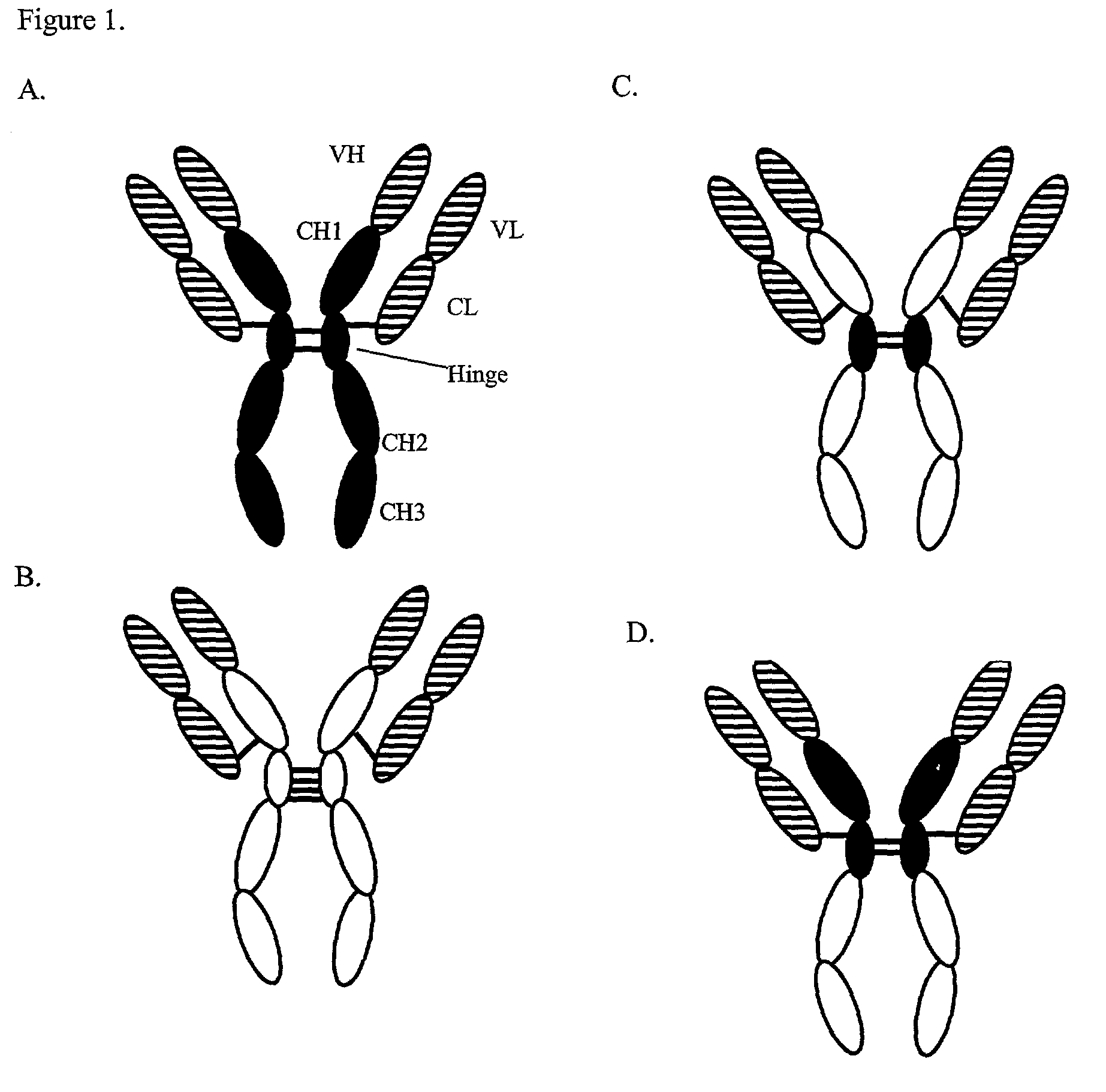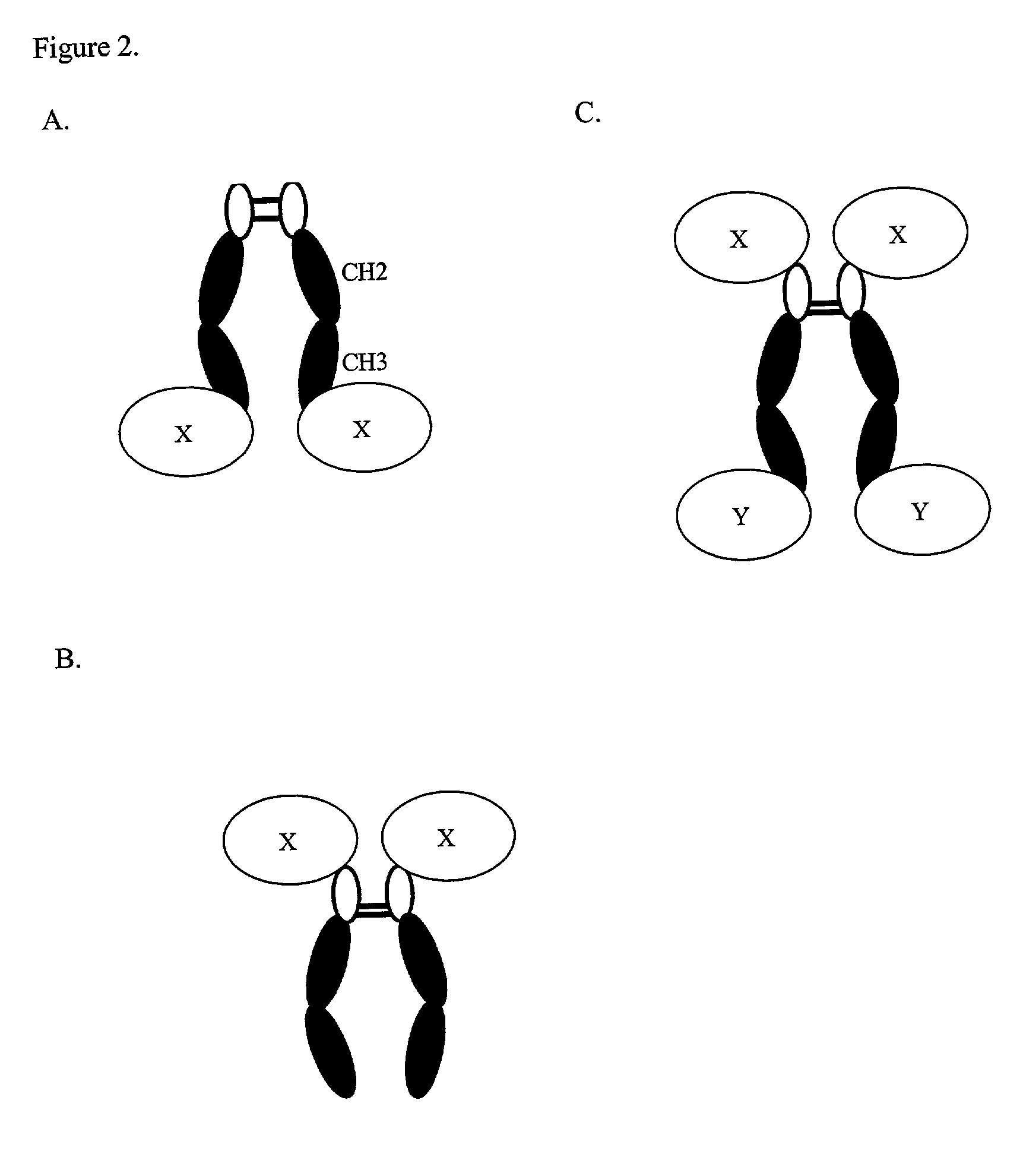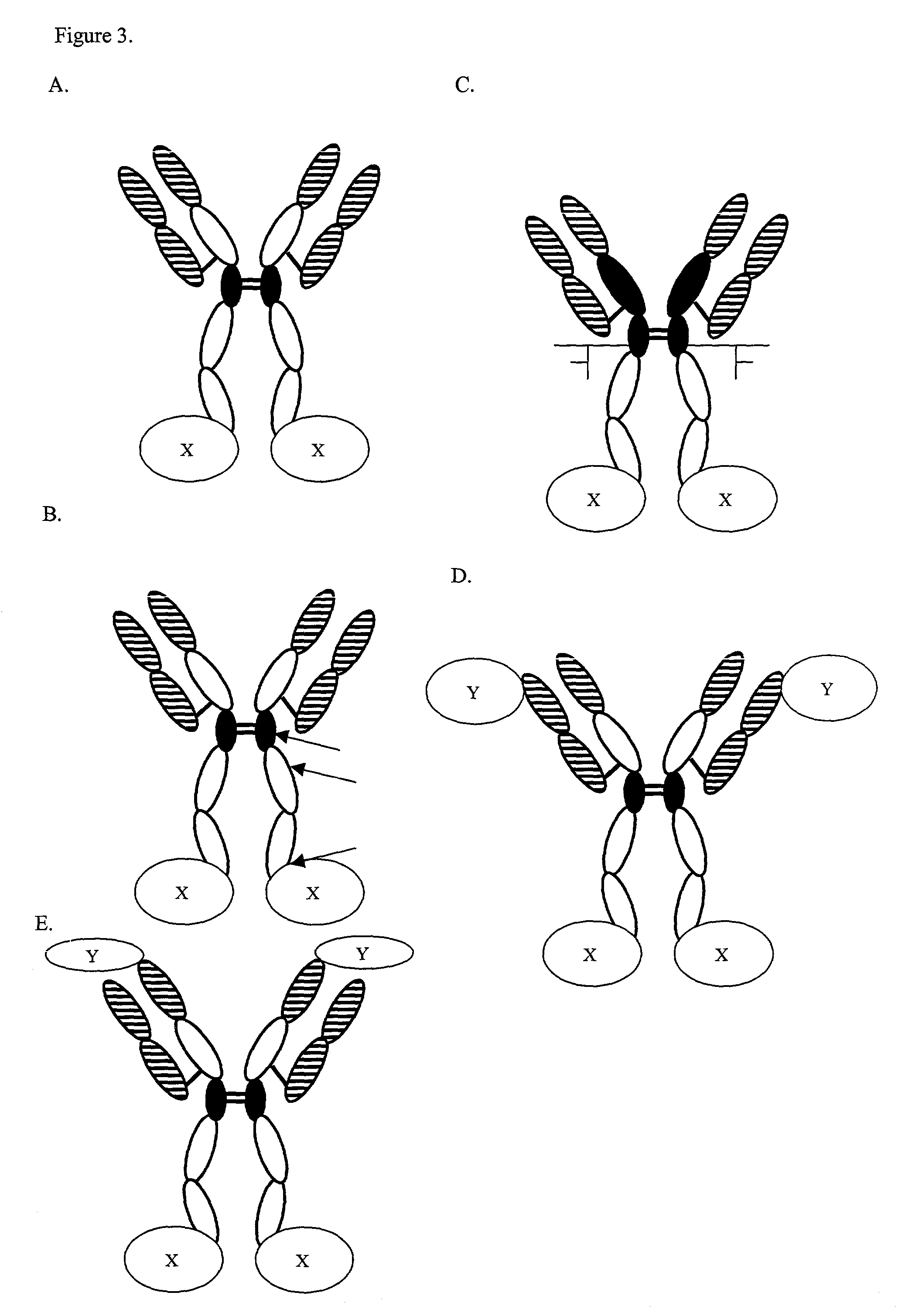Expression technology for proteins containing a hybrid isotype antibody moiety
a technology of hybrid isotype and protein, which is applied in the field of fusion proteins, can solve the problems of inability to fold properly, degraded proteins, and high price of proteins produced in this way, and achieves the effects of reducing effector functions, efficient assembly, and short serum half-li
- Summary
- Abstract
- Description
- Claims
- Application Information
AI Technical Summary
Benefits of technology
Problems solved by technology
Method used
Image
Examples
example 1
Construction of a Plasmid Expressing an Fc-X Fusion Protein with a Hinge Region and CH2 Region from Different Antibody Isotypes
[0126]The construction of a plasmid that expresses HuFcγ1-Leptin has been described in the PCT publication WO00 / 040615A2.
[0127]A plasmid that expresses a fusion of an IgG2-derived Fc and a C-terminal fusion partner was constructed as follows.
[0128]First, the genomic sequence of human γ2 Fc was obtained. The genomic DNA encoding human Fcγ2 was obtained by PCR on cellular DNA isolated from human PBMCs. The forward primer had the sequence 5′ CC TTA AGC GAG CGC AAA TGT TGT GTC GAG (SEQ ID NO: 8), where an AflII restriction site C TTA AG was introduced just upstream of the γ2 hinge coding region GAG CGC AAA TGT TGT GTC GAG (SEQ ID NO:9). The reverse primer had the sequence 5′ CCTCGAG TCA TTT ACC CGG GGA CAG GGA G (SEQ ID NO: 10), where an XhoI restriction site CTCGAG was introduced immediately after the translation stop codon (anticodon TCA). In addition, the rev...
example 2
Characterization of the Oligomerization State of huFc γ2-leptin and huFcγ2h-leptin Immunofusion
[0135]Protein expression from NS / 0 cells using expression vector pdCs-huFc-huLeptin with the γ1, γ2, and γ2h isotypes was evaluated. The physical state of different forms of huFc-huLeptin in which the huFc moiety derived from γ1, γ2, and γ2h isotypes were evaluated.
[0136]DNA constructs generated as described above and as in Lo et al. were transfected into NS / 0 cells and stable expressing cell lines were generated according to standard procedures.
[0137]In this and the following Examples, stable transfectants were generated as follows. Plasmid DNAs were introduced into the mouse myeloma NS / 0 cells by electroporation. NS / 0 cells were grown in Dulbecco's modified Eagle's medium supplemented with 10% fetal bovine serum, 2 mM glutamine and penicillin / streptomycin. About 5×106 cells were washed once with PBS and resuspended in 0.5 ml PBS. Ten μg of linearized plasmid DNA were then incubated with ...
example 3
Construction of a Plasmid Expressing an X-Fc Fusion Protein with a Hinge Region and CH2 Region from Different Antibody Isotypes
[0144]The synthetic DNA sequence (SEQ ID NO: 18) encoding glucagon-like peptide 1 (GLP-1) amino acid residues 7 to 37 (SEQ ID NO: 19) is disclosed below.
[0145]
H A E G T F T S D V S S Y L E GC TTA AGC CAT GCT GAA GGG ACC TTT ACT AGT GAT GTA AGT TCT TAT TTG GAA GGC Q A A K E F I A W L V K G R GCAA GCT GCC AAG GAA TTC ATT GCT TGG CTG GTG AAA GGC CGA GGA GGA TCC TTA
[0146]The DNA encoding the GLP-1 peptide was preceded by C TTA AGC, where the AflII restriction site was used to join this DNA fragment to the DNA fragment encoding the signal sequence (Lo et al. Protein Engineering). At the 3′ end, the DNA encoding GLP-1 was followed by a BamHI restriction site (GGA TCC, which encodes the amino acid residues G and S), and an AflII restriction site, which was used to ligate to the AflII-XhoI restrict...
PUM
| Property | Measurement | Unit |
|---|---|---|
| pH | aaaaa | aaaaa |
| pH | aaaaa | aaaaa |
| conformational state | aaaaa | aaaaa |
Abstract
Description
Claims
Application Information
 Login to View More
Login to View More - R&D
- Intellectual Property
- Life Sciences
- Materials
- Tech Scout
- Unparalleled Data Quality
- Higher Quality Content
- 60% Fewer Hallucinations
Browse by: Latest US Patents, China's latest patents, Technical Efficacy Thesaurus, Application Domain, Technology Topic, Popular Technical Reports.
© 2025 PatSnap. All rights reserved.Legal|Privacy policy|Modern Slavery Act Transparency Statement|Sitemap|About US| Contact US: help@patsnap.com



